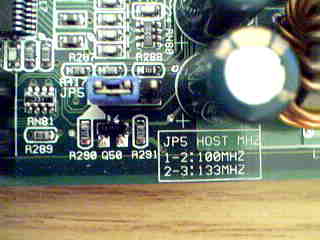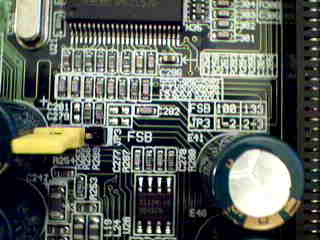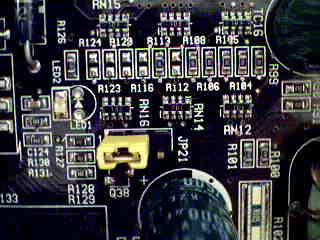VIA's KT133A - Overclocking w/ the 133MHz FSB: The "Issue"
by Mike Andrawes on March 20, 2001 2:09 AM EST- Posted in
- Guides
Elementary my dear Watson: Finding the Cause
From the fact that this problem exists on motherboards from a variety of manufacturers, it is either a problem of the KT133A chipset, a common design error of the motherboards, or maybe AMD has come up with a way to prevent such FSB overclocking. In order to find out the cause of the problem, we discussed the issue with VIA and asked them for details of the boot process of the KT133A, which we hoped would lead to a solution - or at least an explanation.
From what VIA told us, during the first few cycles of the boot process and before the system is able to access the BIOS, the default multiplier of the CPU must be used.
In the case of VIA’s KT133A reference board, those first few cycles at boot use the default CPU multiplier and look to a 100/133MHz jumper for the FSB speed. Once initialized, the BIOS can take over with a new multiplier, FSB, etc. as the motherboard manufacturer chooses to implement.
If motherboards manufacturers follow the reference design, the same thing will happen, where the initial boot up stage will use the default CPU multiplier until the BIOS is initialized., where the new multiplier values can override the default.
So plugging this piece of the puzzle back into our problem, we can now provide a reasonable explanation as to what happened. Using the example we described above, even we have lowered the multiplier of the Athlon-B 1GHz to 7.5 in the BIOS, it’s still initialized at the default multiplier, which is 10. If you’re lucky, the CPU will function long enough to initilize the BIOS, which will in turn load the “new” multiplier of 7.5. Unfortunately, the vast majority of 1GHz CPU’s will not be able to accomplish such a feat.
This theory perfectly explains the issues we have experienced with KT133A motherboards that use a 100/133MHz jumper and multiplier controls in the BIOS. And from the list of KT133A motherboards we have reviewed so far, the affected motherboards are EPoX 8KTA3, MSI K7T Turbo, Iwill KK266, and AOpen AK73 ProA.

The 100/133MHz jumper on the EPoX 8KTA3

The 100/133MHz jumper on the Iwill KK266


The above two pictures show the 100/133MHz jumper on the AOpen AK73 ProA
VIA claimed that they did not pay any attention to this potential problem because they do not design their reference boards around overclocking. They expected people to stay within the 100MHz FSB range when using an Athlon-B, and only go into the 133MHz range when dealing with the Athlon-C processors.










0 Comments
View All Comments